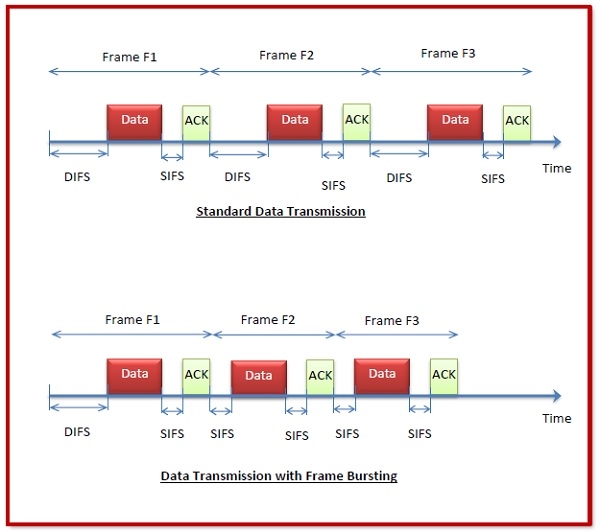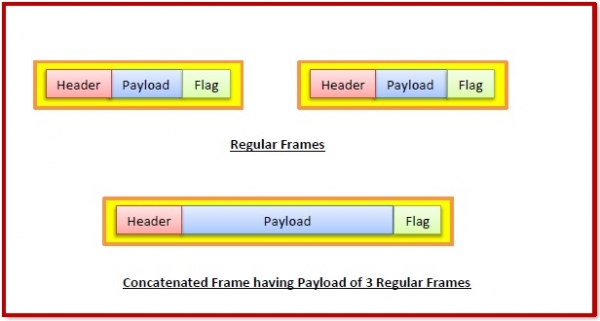
 Data Structure
Data Structure Networking
Networking RDBMS
RDBMS Operating System
Operating System Java
Java MS Excel
MS Excel iOS
iOS HTML
HTML CSS
CSS Android
Android Python
Python C Programming
C Programming C++
C++ C#
C# MongoDB
MongoDB MySQL
MySQL Javascript
Javascript PHP
PHP
- Selected Reading
- UPSC IAS Exams Notes
- Developer's Best Practices
- Questions and Answers
- Effective Resume Writing
- HR Interview Questions
- Computer Glossary
- Who is Who
Frame bursting in Computer Network
Frame bursting is a transmission technique used at the data link layer of the OSI model to increase the rate of transmission of data frames. It can be effectively deployed in Gigabit Ethernets to increase network throughput. It is specified in the draft 802.11e QoS specification.
By this technique, a sender can transmit a series of frames in succession, without surrendering control on the transmission medium. A set of smaller frames may be concatenated to form a large frame that is transmitted at one go.
Technique
Firstly, we consider a situation without frame bursting −
Suppose that a station needs to send three short frames, F1, F2 and F3 via a shared medium. For sending F1, the station contends for the medium for a time equal to DIFS (Distributed Inter-Frame Space). If no other station is transmitting, the station gets the channel. After the frame is sent, the station waits for a time equal to SIFS (Short Inter-Frame Space) for the acknowledgment. The process is repeated for the frames F2 and F3.
It can be seen that the time wasted for DIFS is considerably high, particularly is situations where the data length is low and the number of stations contending for transmission medium is low.
The time wasted for contention is reduced considerably by applying the technique of frame bursting, as depicted in the following situation −
Here, the sender and the receiver acquire the channel for a given transmission time limit, while contending for transmission of the first frame. So, the sender waits for a time period equal to DIFS for transmitting frame F1. After the acknowledgment for F1 has been received, the sender does not need the DIFS since the channel is already acquired. So, it waits for a time equal to SIFS before resending the subsequent frames. This can continue until the permissible total transmission time limit is reached.
The time graphs for standard transmission as compared to the use of frame bursting is shown in the following diagram −

Frame bursting may be also combined with frame aggregation. In this case, a concatenated sequence of multiple frames is transmitted instead of separate small frames. This eliminates the inter-frame gaps and overheads for headers and gaps completely. This is particularly suitable in cases where the frames contain small payload sizes. This is shown in the following diagram −


